Best art shows of summer, in Australia and overseas
There is a host of good art on show this summer. You just need to know where to look
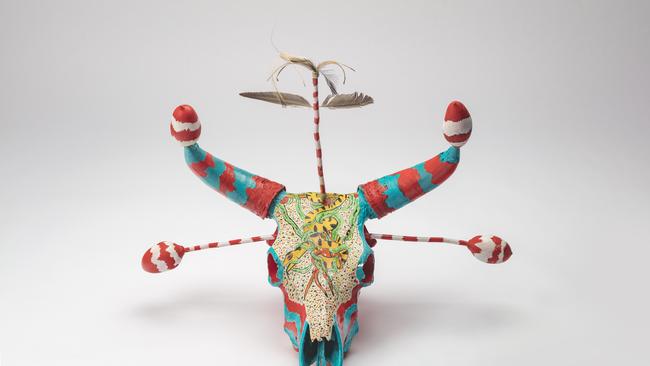
After a catastrophic year for exhibition programs all over Australia and around the world, museums and galleries are slowly beginning to return to normal operations. Many exhibitions that had been postponed are finally opening, while some have been cancelled or deferred indefinitely, and others seem to have been hastily put together to fill up the spaces, so that the overall impression in Australia in particular is patchy and not particularly inspiring.
Meanwhile, even when museums were open, border closures frequently made travel impossible, so that some exhibitions of real quality remained inaccessible to visitors from interstate; I will discuss a couple of these next week.
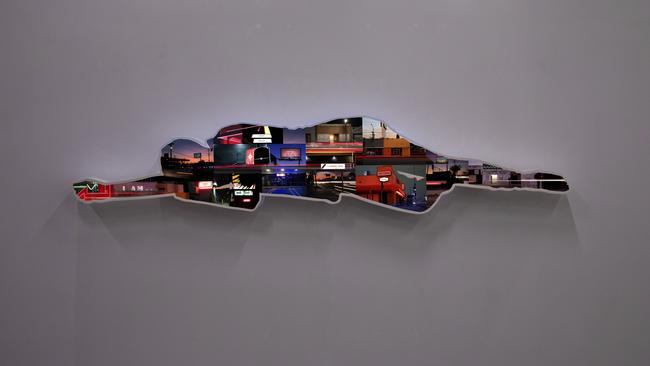
In Sydney, the Art Gallery of NSW has the one of the most prominent exhibitions in the country, Matisse: Life and Spirit, which will be reviewed in a couple of weeks. The State Library, which has recently opened two dedicated map rooms, also has Maps of the Pacific, which I will write about over the summer period. At the MCA, the survey of Doug Aitken continues until early February. The Powerhouse has a number of exhibitions, including The Invisible Revealed, about the use of scientific techniques in dating artefacts, and 500 Arhats, a collection of recently rediscovered ancient Buddhist sculptures from Korea.
Canberra has the greatest concentration of exhibitions worth travelling to see: there is a new survey of Jeffrey Smart at the National Gallery of Australia, an opportunity to discover the work of one our best painters of the last half-century who, as I have explained in a separate piece (and in my book Jeffrey Smart: unpublished paintings 1940-2007), had to swim against the tide of fashion for almost all of his career.
Meanwhile the National Library has an important monographic exhibition on George Frederick Angas, Illustrating the Antipodes, accompanied by a beautifully-produced scholarly publication that adds significantly to our understanding of Australian art in the colonial period. And the National Museum has Ancient Greeks: Athletes, Warriors and Heroes, a loan exhibition from the British Museum with a focus on the theme of contest, both in sport and in war.
Judging from the catalogue which I have just received, the show includes a particularly strong collection of the fine painted Attic ceramics which have preserved such vivid images of mythological stories, theatrical performance and even daily life.
Melbourne, as though still demoralised by what seems to have been the worst experience of lockdown in Australia, also has the fewest exhibitions that appear to be worthy of a special trip. One exception may be Frederick McCubbin: Whisperings in wattle boughs at Geelong Art Gallery, with a focus on his famous A bush burial (1890), although the gallery feels the need to pair this least triumphalist of Heidelberg painters with a post-colonial deconstructive display – “through the lens of gender, cultural diversity and inclusion” – with the excruciating title Exhume the grave.
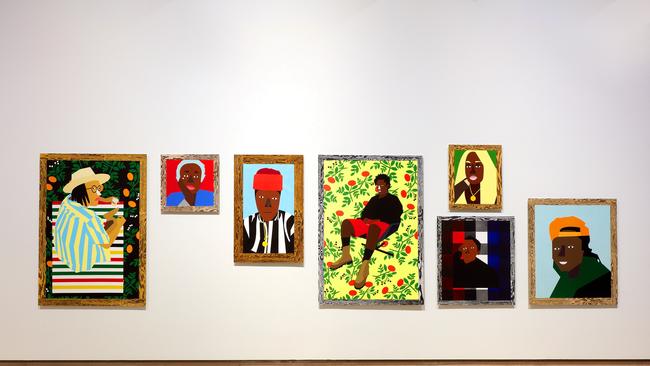
Geelong also has Archie 100, the exhibition produced by the AGNSW to celebrate the centenary of the Archibald Prize, although it was closed by months of lockdown and few people in Sydney had a chance to see it. The selection of works is inevitably very uneven, but nonetheless interesting as an overview of developments in the history of the portrait genre in Australia. The State Library of Victoria has another iteration of The World of the book, with a focus on Dante, whose 700th anniversary this year was ignored by all of our major galleries, in spite of the enormous influence he has had on modern art.
The National Gallery of Victoria presents a rather puzzling picture, perhaps the result of exhibition cancellations and a rush to fill up space: apart from a survey of the work of the French artist Camille Henrot, and a couple of shows devoted to populist subjects of fashion and design, the galleries seem to be almost monopolised by exhibitions of Aboriginal art. There are four already and two or three more starting in a week or so, and this is essentially all there will be to see at the NGV this summer. Even the image chosen to illustrate the permanent collection of Australian art in the online listing is, incongruously, a painting by Emily Kngwarray.
Aboriginal art and culture should be of interest to all Australians, but at the same time they are foreign to the cultural traditions of the vast majority of our population, and unrelated to the histories that have formed the contemporary world. One could expect the NGV to focus, as it usually has in the past, on mounting a variety of exhibitions drawn from its extensive collections and reflecting their impressive cultural and historical diversity. The present program looks lazy and ideological as well as objectively disproportionate.
If too much is never enough, the Art Gallery of South Australia also has its regular survey of contemporary Aboriginal art, Tarnanthi. For a perspective on to a rather wider world, the Queensland Art Gallery is presenting the 10th Asia-Pacific Triennial of Contemporary Art, one of the few international exhibitions of this kind to reach beyond the pre-processed and packaged world of the contemporary art establishment and give some sense of lived experience among peoples across the Asian continent.
Internationally, of course, the choices are far broader and less parochial in their focus. London has a number of important exhibitions, starting with Poussin and the Dance – a recurrent motif in his paintings – and Duerer’s Journeys: Travels of a Renaissance Artist, both at the National Gallery. As usual, there are useful online resources for those of us who cannot get to London at the moment.
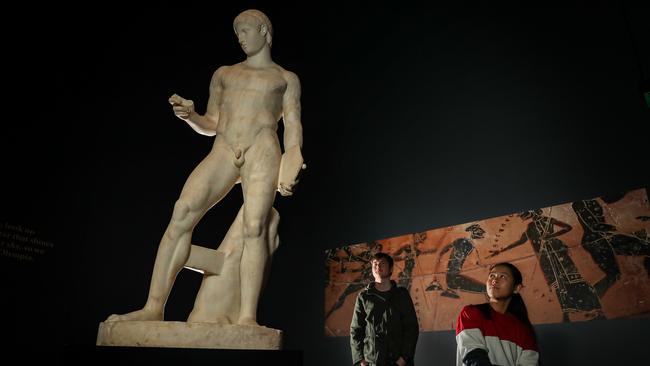
The British Museum is presenting Peru: a journey in time and Hokusai: The Great Picture Book of Everything, as well as Life in a cup, which examines the history of coffee in the Islamic world. The Tate Britain, meanwhile, has Hogarth and Europe – offering a new perspective on this quintessentially British artist – and the Tate Liverpool presents Lucian Freud: Real Lives.
In Paris, the Louvre has Paris-Athènes, to commemorate another event Australian museums overlooked, the bicentenary of the Greek war of independence from the Ottoman Empire. The Musée d’Orsay has what looks like a fascinating exhibition looking at the relations between photography, the origins of cinema and the other arts from the earliest days of photography to the beginning of the 20th century. The Grand Palais, meanwhile, is showing a retrospective of Georg Baselitz.
In Rome where, as throughout Italy, the 700th anniversary of Dante’s death has been marked by a variety of events and exhibitions, the Scuderie del Quirinale has Inferno, curated by the French critic and art historian Jean Clair and considering the ideas of hell and damnation from the middle ages to the present day.
A short two-minute trailer easily found on Youtube gives you an idea of what looks like a dramatic and brilliantly-assembled exhibition, and one that for several reasons – lack of expertise and ideological anxiety among others – it is almost impossible to imagine being produced in Australia.
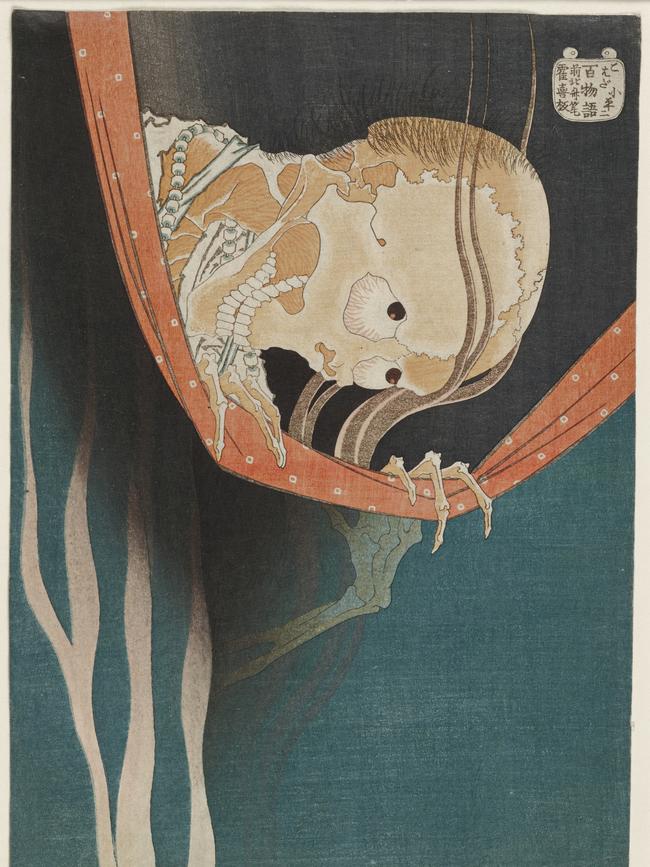
Berlin has Iran: five millennia of art and culture, which is surprisingly the first significant exhibition devoted to Persian, and more broadly Iranian and even pre-Iranian culture in Berlin.
The exhibition, which is built around a loan of 360 objects from the Sarikhani collection in London but supplemented by works in the Berlin collection, is – somewhat confusingly – related to but not the same as the Epic Iran exhibition earlier this year at the Victoria and Albert Museum in London, which was similarly based on works lent by the Sarikhani collection but in that case supplemented by pieces from British collections.
In any case, like the London exhibition, itself the first ambitious survey of the subject since the 1931 Royal Academy exhibition Persian art, the Berlin one traverses a vast period from antiquity to modern times. Starting with the Elamites and other pre-Iranian peoples, the exhibition covers the establishment of the Persian Empire in the 6th century BC, when it extended from Anatolia and Egypt to the north of India, the Persian Wars with the Greeks in the 5th century, the empire’s conquest by Alexander in the 4th century, the subsequent Parthian and Sassanian empires that were the eastern neighbours of Rome and then Byzantium, the Arab conquest in the 7th century AD, the revival of Persian culture from the turn of the millennium, the prominence of Persians in the Islamic Golden Age and eventually the Persian linguistic and cultural hegemony that extended once again from Turkey to India, mirroring the ancient empire.
There are of course also many exhibitions in America, one of which is Surrealism Beyond Borders at the Metropolitan Museum in New York. The epicentre of the surrealist movement was in Paris from the early 1920s (the first Surrealist Manifesto was in 1924) to the later 1930s and the outbreak of the World War II. Surrealism failed to take a stand against the Nazi invasion of France and never really regained its former credibility after the war, when it was replaced by the new enthusiasm for Existentialism, born out of the experience of the Resistance movement.
As the title of this exhibition suggests, however, the surrealist movement was not confined to France; there were surrealists in many countries and several continents, including Mexico and other nations in Central and South America. The spread of surrealism has a particular interest for the history of Australian art as well: it was the first modernist movement that arrived here while it was still thriving in Europe, and it remained the lifelong inspiration of James Gleeson, as well as influencing many other modernist artists such as Albert Tucker.
Finally, among so many others, the National Gallery of Art in Washington has an exhibition on the technique of aquatint. This is a form of etching in which the copper plate is coated with rosin powder that is then heated and melted, forming millions of tiny dots of acid-proof varnish; when the plate is immersed in acid, millions of tiny pits are correspondingly bitten between these dots. These pits are so small and so close together that they print as surfaces of tone. Stopping out areas between successive immersions in the acid produces different depth of biting and consequently different grades of tone.
Mezzotint, in which the whole plate is manually pitted with a rocker and then selectively scraped back, produces a more continuous surface with infinite nuances of tone, like a photograph; in aquatint there are usually only a few grades of tone, so the effect is more abstract and in some ways more dramatic and expressive. As is implied in the very title of the exhibition, Aquatint: from its origins to Goya, the technique founds in greatest exponent in Goya’s etchings, in which vivid but artificial effects of tone evoke the confusion and darkness that he sees in the human soul.
AUSTRALIA
SYDNEY
Art Gallery of NSW
Matisse: Life and spirit – to March 13
MCA
Doug Aitken – to February 6
Powerhouse
The Invisible Revealed – to May 22
500 Arhats – to May 15
State Library of NSW
Maps of the Pacific – to April 25
CANBERRA
National Gallery of Australia
Jeffrey Smart – to early March
National Library of Australia
George French Angas – to January 30
National Museum of Australia
Ancient Greeks: Athletes, Warriors and Heroes – to May 1
MELBOURNE
National Gallery of Victoria
Bark ladies: Eleven Artists from Yirrkala –
to April 25
ACMI
Disney: The Magic of Animation – to January 23
State Library of Victoria
The World of the book
Geelong Art Gallery
Frederick McCubbin: Whisperings in wattle boughs – to February 13
Archie 100 – to February 20
BRISBANE
Queensland Art Gallery / GoMA
10th Asia-Pacific Triennial – to April 25
ADELAIDE
Art Gallery of South Australia
Tarnanthi – to January 23
INTERNATIONAL
LONDON
National Gallery
Poussin and the Dance – to January 3
Duerer’s Journeys: Travels of a Renaissance Artist – to February 27
British Museum
Peru: a journey in time – to February 20
Hokusai: The Great Picture book of Everything – to January 30
Life in a cup – to September 18
Tate Britain Gallery
Hogarth and Europe – to March 20
Tate Liverpool
Lucian Freud: Real Lives – to January 16
PARIS
Louvre
Paris-Athens – to February 7
Musée d’Orsay
Enfin le cinéma! Arts, images et spectacles en France (1833-1907) – to January 16
Centre Pompidou
Georg Baselitz retrospective – to March 7
ROME
Scuderie del Quirinale
Inferno (curated by Jean Clair) – to January 9
BERLIN
Staatliche Museen
Iran: five millennia of art and culture –
to March 20
New York
Metropolitan Museum
Surrealism Beyond Borders –
to January 30
Washington
National Gallery
Aquatint: From Its Origins To Goya –
to February 21




To join the conversation, please log in. Don't have an account? Register
Join the conversation, you are commenting as Logout